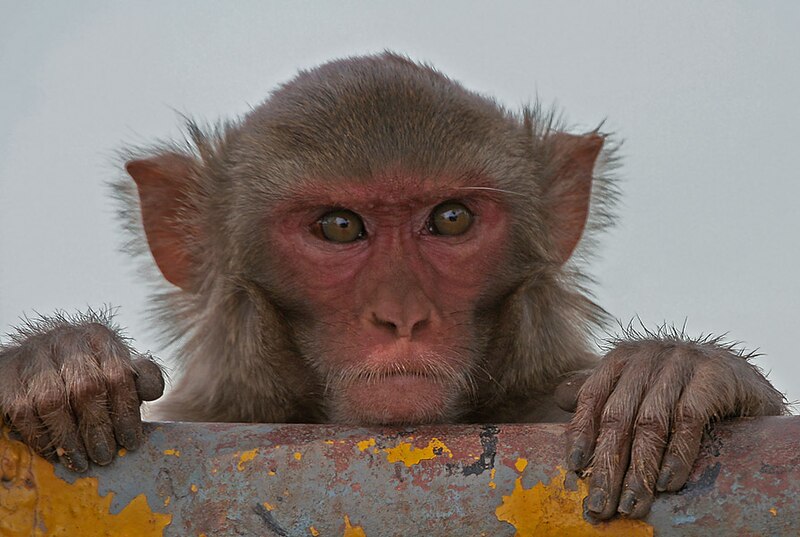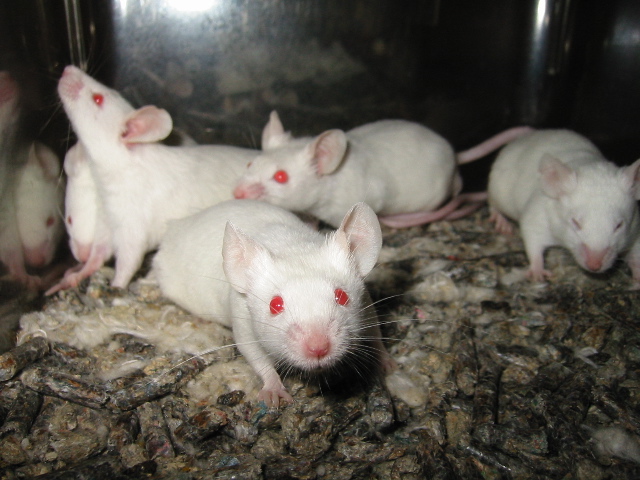Do animals feel empathy?
Ask any pet owner if his pet empathizes with him, and chances are that you’d get a confident, affirmative, “Yes!”. We have plenty of anecdotal evidence suggesting that animals are able to “feel” for one another, such as this heroic mouse that bravely attacked a venomous snake which was trying to eat its companion as well as the unlikely “friendship” that sprung up between this snake and his lunch.
(Video courtesy of ITN)
The idea that animals are able to “feel” for one another just like humans do is an idea that has large popular appeal. However, is there any scientific backing to this idea?
For decades, animal behaviorists have been advised against imputing emotions from animal behavior. In the words of The Oxford Companion to Animal Behavior, “One is well advised to study the behavior, rather than attempting to get at any underlying emotion.” (Masson and McCarthy, 1987)
However, exciting studies in animal empathy are challenging the status quo.
Rhesus macaques (Macaca mulatta) were shown to refuse to pull a chain that dispenses food to them when the same chain concurrently delivers a shock to a companion (Masserman, J.; Wechkin, S.; Terris, W., 1964). In other words, the macaques were deliberately starving themselves in order to avoid hurting another macaque. One macaque was able to refrain from pulling the chain for up to 12 days! (B. M. de Waal, 2007)

(Image courtesy of J.M.Garg)
Empathy isn’t solely the reserve of higher primates. Dogs (Canis familiaris) have been shown to be significantly more likely to “comfort” strangers when they are crying (as opposed to talking or humming). (Custance, D. M. and Mayer, J., 2012)

(Image courtesy of Dave Buchwald)
Even mice seem capable of empathy. In a landmark study by McGill researchers (Langford, J, et al, 2006), mice (Mus musculus) injected with ascetic acid were placed in transparent tubes in pairs and individually. It was discovered that their distress action patterns (stretching movements) occurred with higher frequency only when they were paired with a similarly suffering cage mate. This increase in pain sensitivity in the mice suggests an ability to empathize with the suffering of a companion, a finding similar to those of empathy studies in humans.

(Image courtesy of Aaron Logan)
Having said this, emotion and empathy remain notoriously difficult concepts to define and interpret despite centuries of philosophical and scientific enquiry (Fellous, J., 2006). In light of this, minimalist behaviorists are unlikely to be completely swayed by animal empathy proponents. It is difficult to determine if an animal truly “feels” for his companion’s suffering in the same way a human does, or if it is merely reacting to stimuli. Additionally, “feeling” could be a human anthropomorphic construct erroneously imposed on animal behavior (Balter, M., 2012)
Journal Articles
Custance, Deborah M. and Mayer, Jennifer. 2012. Empathic-like responding by domestic dogs (Canis familiaris) to distress in humans: An exploratory study. Animal Cognition, pp. 1-31. [Article]
Masson, McCarthy, 1987. The Oxford Companion to Animal Behavior. pp XVIII.
Langford, J.D.; Crager, S.E.; Shehzad, Z; Smith, S.B.; G. Sotocinal, S; S. Levenstadt, J; Chanda, M.L.; Levitin, D.J.; Mogil, J.S., 2006. Social Modulation of Pain as Evidence for Empathy in Mice. Science, Vol. 312 no. 5782: 1967-1970
Masserman, J.; Wechkin, S.; Terris, W., 1964. Altruistic Behavior in Rhesus Monkeys. American Journal of Psychiatry, 121: 584-585
Fellous, J., 2006. A Mechanistic View of the Expression and Experience of Emotion in the Arts. The American Journal of Psychology, Vol. 119, No. 4: 668-674
Balter, M, 2012. ‘Killjoys’ Challenge Claims of Clever Animals. Science, Vol. 335: 1037-1037
Articles
“Do Animals Feel Empathy?” by B. M. de Waal, Frans. Scientific American Mind, Dec 2007/Jan 2008. URL: http://www.sciamdigital.com/index.cfm?fa=Products.ViewIssuePreview&ARTICLEID_CHAR=83163305-3048-8A5E-10B22C0435904AED (accessed on 11 April, 2013)
Images
“Lightmatter_lab_mice.jpg” by Aaron Logan, 25 February 2003. URL:http://www.lightmatter.net/gallery/albums.php (accessed on 11 April, 2013)
“Rhesus Macaque (Macaca mulatta) in Kinnarsani WS, AP W IMG 5792.jpg” by J.M. Garg, 14 Feb. 2009. URL: http://commons.wikimedia.org/wiki/File:Rhesus_Macaque_%28Macaca_mulatta%29_in_Kinnarsani_WS,_AP_W_IMG_5792.jpg (accessed on 11 April, 2013)
“A girl and her dog.jpg” by Dave Buchwald, 20 April 2011. URL: http://commons.wikimedia.org/wiki/File:A_girl_and_her_dog.jpg
Videos
” Snake befriends its hamster lunch in zoo” by ITNSource, 16 July, 2007. URL: https://www.youtube.com/watch?v=-IG4kceZBWA (accessed on 11 April, 2013)